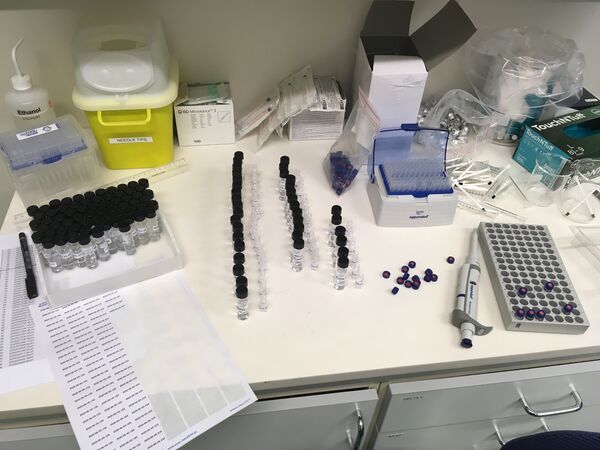Protocol for freshwater and saltwater stable isotope analysis on Picarro
Overview: cal standards and drift standards, duplicates. Double peak, low memory option, fast option
Choosing the range of standards
Depending on the known or expected range of the samples, the calibration standards need to be chosen. The calibration standards should bracket the range of samples as close as possible. If the samples are processed in several batches from different sources (groundwater/snow/rain), the calibration standards may be adjusted for each run.
Typical combinations are:
- EVAP/VATS for mid-latitude precipitation samples
- DI/GSM1 or DI/VATS for snow
- EVAP/VATS for lake or stream water
DI should always be included as the long-term drift standard of the laboratory. The sequence of the standards should be such that the jump to the first sample is minimised. For example, when measuring snow samples, the sequence should be EVAP-DI-VATS-Sample1 etc.
Duplicate samples and standards
Memory is a challenge for all liquid measurements. Standards are measured with 12 injections, with 2 preceeding double-peak wet flushes, requiring in total 16 injections. Samples in contrast are commonly run with 6 effective injections, i.e. 10 injections with a double-peak wet flush. The isotope composition between the samples of one run typically varies less than the jump from the last standard and the first sample. Therefore, sample 1 is duplicated in the run, and discarded in the analysis.
The drift standard is introduced after 10 samples in the run sequence, and measured as if it were a sample. Since the drift standard is measured with 6 effective injections (10 actual), memory effects could again be introduced with the standard and the subsequent sample. Therefore, we duplicate the drift standard vial, and the subsequent sample vial. The resulting setup of the run is shown in Fig. X
Steps to start the run
- prepare samples
- prepare/label the vials with FARLAB ID (using excel form), number of samples (20) + 2 (duplicates) + 5 (standards) = 27
- pipette and filter the samples
- pipette standards (2 cal standards, and 3 vials of drift standards)
- fill to below neck level
- if cold, reopen unc
- prepare sample description
- log run details
- setup autosampler
- start coordinator
- start run
- during run
- as run is finished

